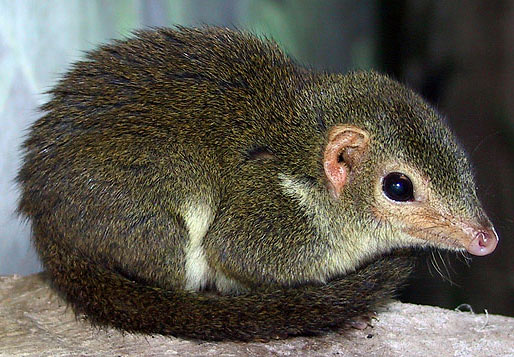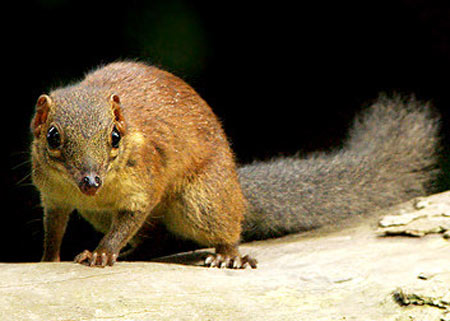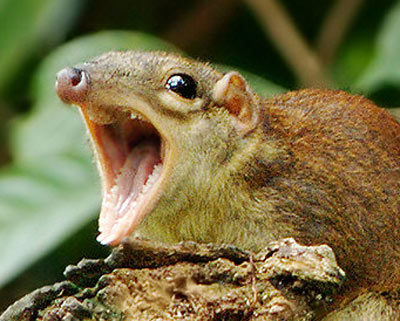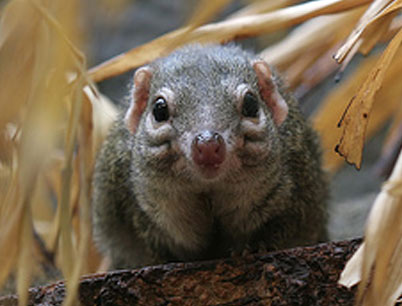Common Treeshrew – Not a Squirrel

A native of Thailand; Malaysia; and the Siberut, Batu, Sumatra, Java, Bangka, Riau, Lingga and Anambas islands of Indonesia, the common treeshrew is a small mammal. Although they may look a bit like rodents (especially squirrels except they have longer faces), they have some crucial differences. They aren’t primates either. They were once classified as insectivores but now form their own group of mammal (the order – Scandentia).

Despite being smallish, at a length of 6.3 to 8.3 inches (16-21 cm), and with a weight of 0.4 lbs (190 g), the common treeshrew is actually one of the largest treeshrews in existence. It varies in color from reddish brown, to grey, to black, with a white belly. It has a long bushy tail that almost as long as it’s body, and it has bare paws with sharp nails. It also has a long nose/snout with a naked patch of skin above it. Both the males and females are very similar in appearance, with both sexes featuring a pale stripe on each shoulder. They do most of their foraging on the ground, in shrubs, and in tree holes during the day; searching for fruits, seeds, leaves, ant, spiders, and other insects in pairs.

The common treeshrew is very agile, and can climb both large and small trees; and jump from branch to branch over distances of almost 2 feet. They use scent marking from the glands in their chests and genitals to communicate and identify their young and their territory. Males are often know to fight over marked territory, as well as engage in chases over female mates. With a life expectancy of only 2-3 years, it doesn’t have a lot of time, but makes the most of it with it’s active lifestyle.

